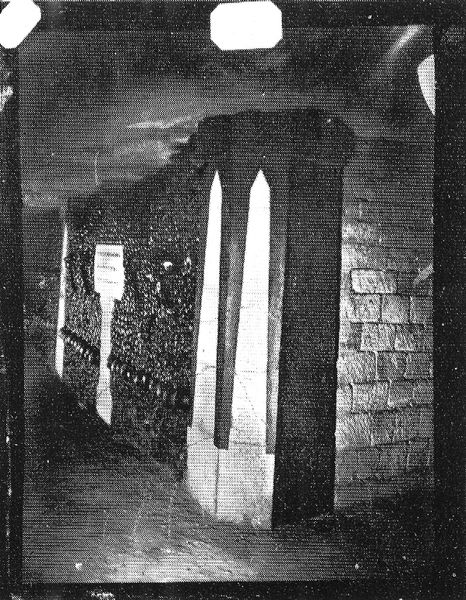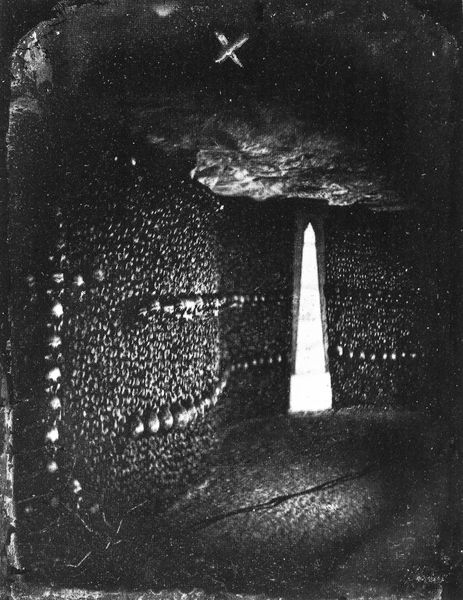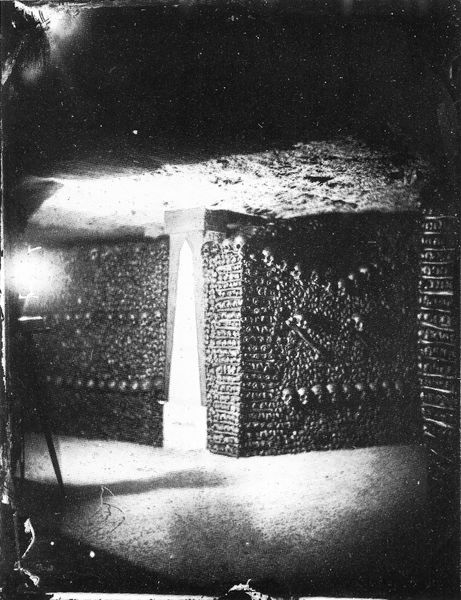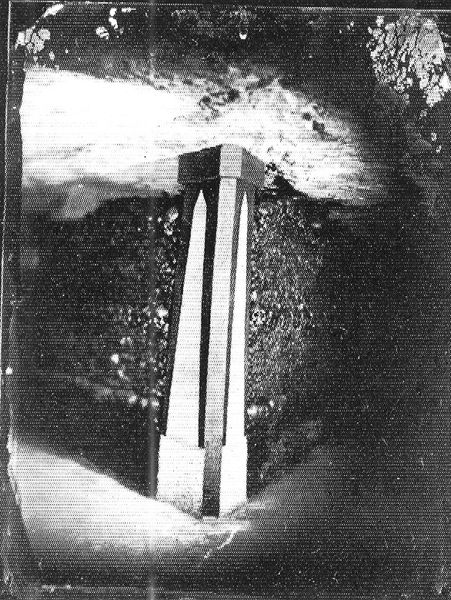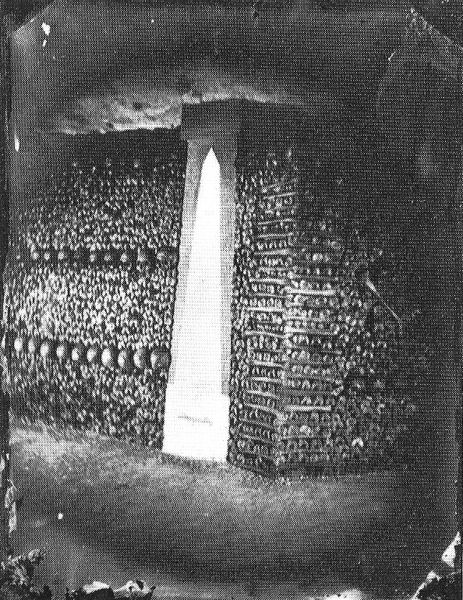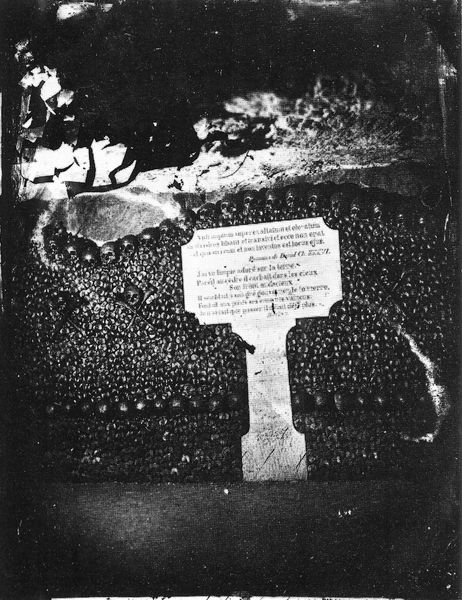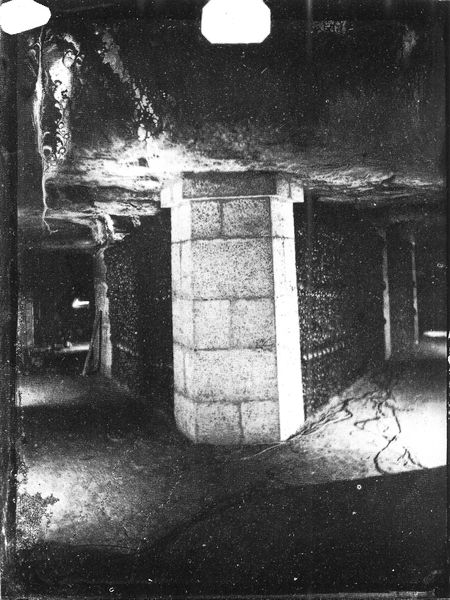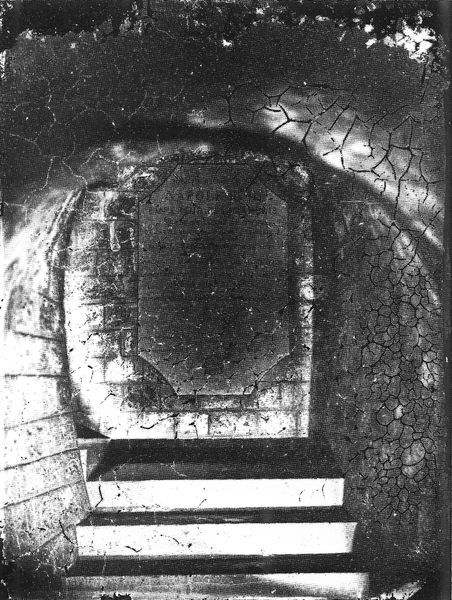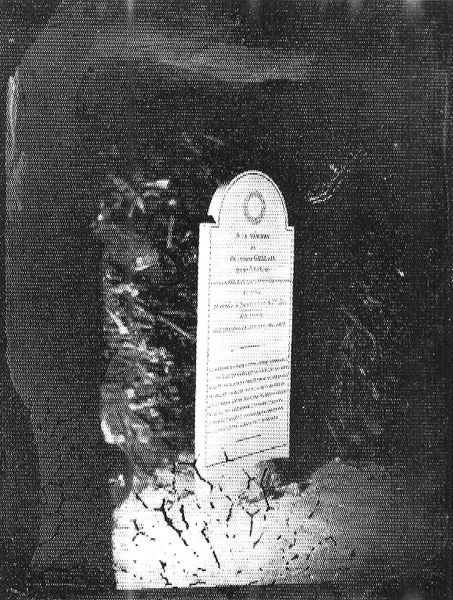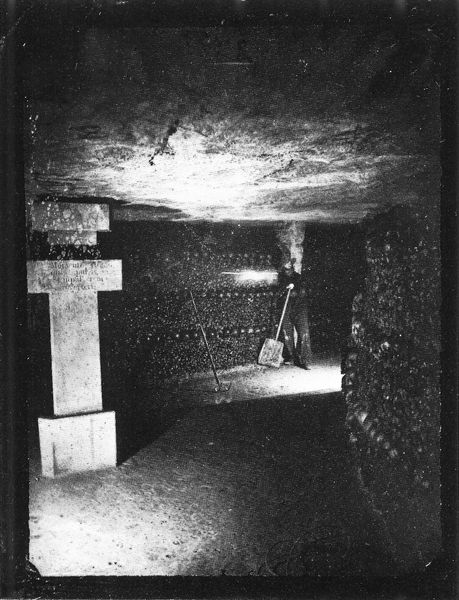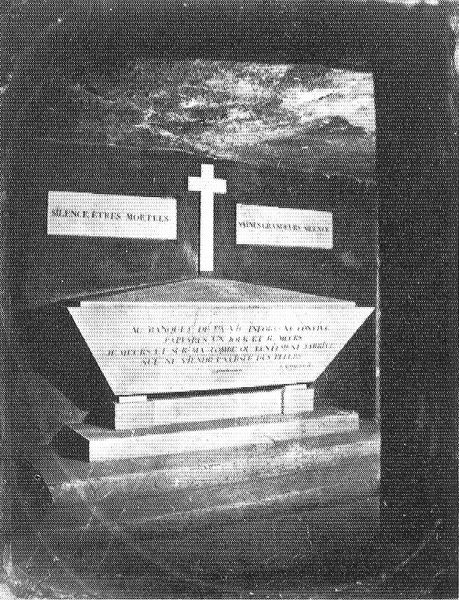
Copyright: Public domain
Editor: Nadar’s "Catacombes De Paris," a gelatin-silver print from 1861, gives such an eerie feeling. All those skulls! The contrast between the light and shadows is so stark. What’s your interpretation of this subterranean scene? Curator: The image resonates deeply within the cultural anxieties of 19th-century Paris. The Catacombs, a relocated burial site due to overflowing cemeteries, became a spectacle, a macabre tourist destination. Nadar, through his photography, wasn't merely documenting, but engaging in the evolving public discourse about death, sanitation, and urban space. What do you think about how this differs from earlier depictions of death? Editor: I see what you mean! It’s not a glorious battlefield or a religious scene; it’s almost like an… inventory? Curator: Precisely. This challenges Romanticism’s idealized visions. The "Catacombes" also points to the rise of photography's documentary role, shaped by the Second Empire's need for control and knowledge of its territory. And the Catacombs themselves became almost a political stage, hosting events. Did this image find an audience? Editor: Given that it was the early days of photography, who was this even shown to, and how? Curator: Think of illustrated journals, scientific publications, even art exhibitions, though photography struggled for artistic acceptance at the time. And it fed the bourgeois fascination with the city's underbelly, both literally and figuratively. The politics of imagery played a big part, highlighting government interest in controlling death and social order, which, let’s not forget, was soon after the French revolution. Editor: That completely reframes how I see the image. I wasn't really thinking about that relationship to documentation, control and spectatorship. Curator: Right, context shifts our understanding, allowing a deeper reading into how social, cultural, and even institutional frameworks influence our interpretations of art.
Comments
No comments
Be the first to comment and join the conversation on the ultimate creative platform.
